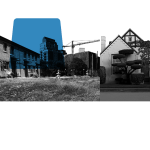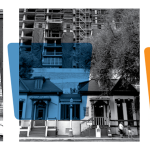I grew up in the Near South Side of Milwaukee, Wisconsin. The area was, and remains, a neighborhood of older housing units, replete with deleterious conditions ranging from lead-based paint to mold and vermin infestations to community violence. These inner-city neighborhood environments aren’t unique. Neither are the health outcomes they produce.
In my current work as a researcher, I look at how neighborhoods affect child health and developmental outcomes. I’ve come to see how neighborhood environments and housing quality are inextricably linked to the overall health and well-being of children, their families, and the communities in which they reside.
When Bon Secours “resisted the tug of ‘business as usual,’” it made resident-led initiatives top priority.
This work underscores the connections between higher risks of childhood asthma and older housing stock, exposure to violence, and high levels of neighborhood air pollutants (eg, car exhaust) and hazards (eg, lead) that can cause respiratory and neurological issues. Exposure to neighborhood violence was also significantly linked to higher risks of neurodevelopmental disorders, behavioral problems, substance use initiation, and aggressive or violent behavior among low-income Latino and African American children and youth.
Bon Secours has made these connections, too, and embraced its dual roles as health care provider and community anchor. The hospital recognized that good health and overall well-being are essential to optimizing community functioning. So when the hospital “resisted the tug of ‘business as usual,’” it made resident-led initiatives top priority.
Hospitals and other institutions can optimize community functioning and serve as anchors for comprehensive local initiatives. But to truly partner with the people they serve requires intentional actions and dedicated resources.
Resisting the tug of business as usual, particularly in areas with entrenched disinvestment, often means looking outside the organization for partnership and innovation. Here are a few guiding principles to help hospitals and other local institutions develop their practice in communities.
1 ) Look for opportunities to formalize collaborations with other agencies and institutions.
As an outreach social worker on Milwaukee’s South Side, I witnessed the benefits of collaborations between health departments, hospitals, and social services organizations. Starting in the early 1970s, my agency partnered with a free pediatric clinic in the community to provide social services to patients.
At the time, there were no bilingual professional social services staff at Milwaukee’s Children’s Hospital, the Milwaukee County Health Department, or other local health facilities. Our work with the health department started when we accompanied nurses on their home visits to immigrant families battling tuberculosis. Our community outreach team worked closely with these groups to facilitate health care delivery and advocate for better access to care. In many ways, these activities served as precursors to contemporary wraparound systems of care.
Hospitals and other institutions can optimize community functioning and serve as anchors for comprehensive local initiatives. But to truly partner with the people they serve requires intentional actions and dedicated resources.
These efforts involved building relationships that transcended organizational boundaries and challenging the status quo in health care delivery. At the time, the status quo meant non-English speaking families didn’t have institutional support. Young children served as interpreters for older family members during medical appointments, and patients didn’t have interpreters present when signing legal documents.
Our new relationships initially led to the development of protocols within these health care settings that ensured patients had access to professional interpreters. The work sparked conversations between people playing different roles in health care delivery, and together we were able to think outside the box.
2 ) Act as a bridge between residents, practitioners, and local and state agencies.
Contact with health care providers also led social services agencies like mine to work with local and state organizations to develop new pathways to medical treatment for uninsured and special needs children and adults in the community.
Milwaukee’s Children’s Hospital reworked how it informed uninsured and underinsured immigrant families of their eligibility for cost reductions in care. And state organizations implemented new policies and procedures to provide services to the medically underinsured and uninsured. For instance, Wisconsin Bureau for Crippled Children (the institution’s name at the time), which was tied to the Department of Public Instruction, started accepting referrals from local social services agencies for medical care support for immigrant children.
New approaches to collaborative and intersectional work are needed now more than ever.
This collaborative work, which continues to this day, underscores how individualized responses to immediate health needs can be augmented and sustained when they are coupled with efforts to change policies and practices to meet the needs of the larger community.
3 ) Link investments in community health to economic development efforts.
For several decades, municipal agencies and neighborhood community development corporations in Milwaukee have worked to revitalize the physical infrastructure and local economy in the Near South Side. Current efforts are targeted toward rehabilitation and redevelopment of affordable housing, street and parking improvements, green space expansion, creation of neighborhood-serving businesses, and support for new and innovative economic investment, such as arts or transportation corridors.
Despite the laudable work targeting economic revitalization and development occurring primarily on the edges of the Near South Side, the concomitant investments in the health and well-being of community members are key to sustaining these improvements. This is where partnerships similar to Healthy Homes or Healthy Kids, Healthy Communities, which are aimed at improving residents’ health and well-being, become an integral part of economic development projects in low-income communities.
As Bon Secours discovered, “resisting the tug of ‘business as usual’” unleashed the power of residents and local institutions to develop a comprehensive community initiative that has broken the cycle of neighborhood disinvestment in West Baltimore. Increasingly, we’ll need hospitals and other local institutions to advance this kind of model. New approaches to collaborative and intersectional work are needed now more than ever.
Anna Maria Santiago, PhD, is a member of the BLOCK Project’s Community of Practice and a Professor at the Michigan State University School of Social Work.


